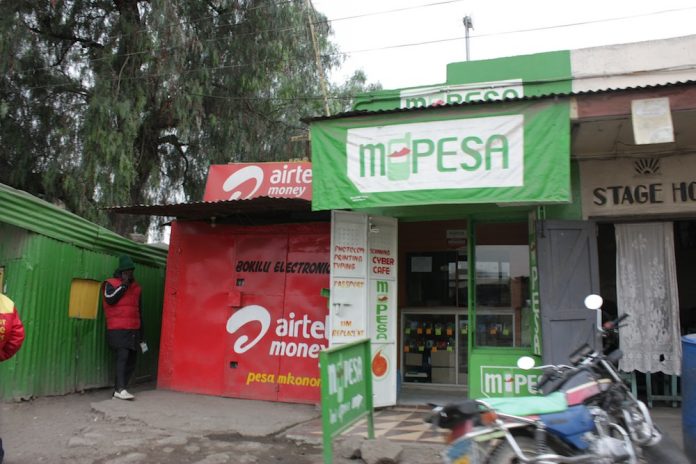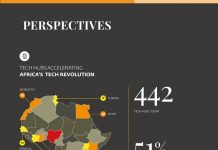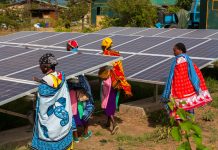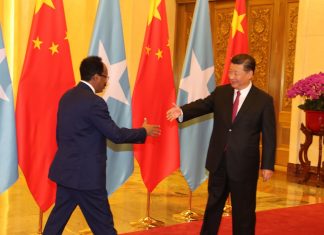Sub-Saharan Africa was home to 98 million registered mobile money accounts in June 2013, more than twice as many as the total number of Facebook users in the region, and more than any other region in the world, according to the 2013 report on the State of the Mobile Financial Services Industry, the third and most recent report on the industry published by GSMA Mobile Money for the Unbanked (MMU) program.
Worldwide, more than 203 million mobile money accounts were registered in June 2013, up from 108 million in June 2012 and form 71 million in 2011. East Africa alone accounted for a particularly large portion of mobile money accounts globally, representing 34 percent of the world’s total registered accounts in June 2013, the report says.
At a time when some 2.5 billion people in lower to middle income countries are unbanked, with no access to financial services, mobile phones are providing an infrastructure to offer financial services sustainably, such as payments, transfers, insurance, savings, and credit. Of the 2.5 billion unbanked, more than 1 billion already have access to a mobile phone.
“Mobile money represents a tremendous opportunity for social impact through enabling customers to access services which can help them to manage their daily lives and improve their livelihoods. It also represents an important commercial opportunity,” GSMA Director General Anne Bouverot said in a comment on the new report.
Indeed, with mobile phone usage exploding in Africa—growing 18 percent a year in sub-Saharan Africa in the five years to June 2013—commercial opportunities abound in mobile financial services, including insurance, mobile credit and savings services. To date, mobile insurance has been most popular in sub-Saharan Africa and South Asia, while the most successful deployments of mobile credit and savings have been in Kenya, Zimbabwe and Pakistan, where mobile money has reached scale.
Supported by The Bill & Melinda Gates Foundation, The MasterCard Foundation, and Omidyar Network, GSMA (Global Adoption Survey of Mobile Financial Services)’s MMU program is dedicated to providing “convenient, safe and affordable financial services” to the underserved through support for the expansion and scaling up of mobile money services.
The program’s annual state-of-the-industry report uses data from the MMU Deployment Tracker, which monitors the number of live and planned mobile money services for the unbanked across the globe, and from the MMU Global Adoption Survey of Mobile Financial Services. A total of 110 participants from 56 countries were surveyed for the 2013 report.
Of the 98 million registered accounts in sub-Saharan Africa in June 2013, 42.4 million were active, meaning they had been used to perform at least one transaction within the previous 90 days. That makes sub-Saharan Africa the world’s largest region in terms of active mobile money accounts, with South Asia the second largest.
At least nine countries in sub-Saharan Africa already have more registered mobile money accounts than bank accounts, compared to just four last year. The nine are Cameroon, the Democratic Republic of Congo, Gabon, Kenya, Madagascar, Tanzania, Uganda, Zambia and Zimbabwe.
Sub-Saharan Africa also accounts for the lion’s share of live mobile money services. At the end of 2013, 52 percent of live services were in this region. Although this follows a decreasing trend—down from 56 percent in 2012 and from 58 percent in 2011—the region still accounts for the largest number of planned service deployments for 2014.
MMU researchers say they expect this percentage to fall below 50 percent next year as the majority of planned deployments are outside the region, particularly in Latin America, where 60 percent of adults are unbanked. With regulatory changes in several countries enabling non-banks to issue e-money, 19 mobile money launches are planned in Latin America, the second largest number after sub-Saharan Africa.
“For a long time, sub-Saharan Africa led the industry, with the vast majority of deployments, success stories, and best practices coming from the region. Today this is changing, and innovative regional models are beginning to emerge,” the report says.
In Tanzania and Uganda, East Africa’s most advanced mobile money markets, there is growing demand from businesses and small and medium-size enterprises to use mobile money in their business transactions. In Tanzania, for example, 21 percent of M-PESA users and 12 percent of Airtel and Tigo Pesa users use mobile money for such transactions. Of these, 74 percent use it to pay suppliers, 23 percent use it to receive customer payments, and 7 percent use it to pay employees.
Similarly in Uganda, 19 percent of mobile money users said they use mobile money as part of their business. Most received payments from customers through mobile money or used mobile money to pay suppliers for inventory.
Kenya, the home of M-PESA (mobile-phone based money transfer and microfinancing service for Safaricom and Vodacom) is a hub of mobile money innovation in areas such as healthcare and microfinance. With M-PESA providing the “rails” upon which value-added services can be built, a variety of health-related mobile finance offerings have emerged in that country, as well as in Tanzania.
“From pre-paid savings to health insurance, mobile platforms are striving to ensure affordable healthcare is not solely a luxury; but rather, a universal right,” the report says.
Musoni (‘M’ for Mobile and ‘usoni’ for future), which was established in Kenya at the end of 2009, is the first microfinance institution in the world to go 100 percent mobile, using mobile money transfer services for all loan repayments and disbursements.
A full copy of the MMU 2013 report can be found at http://www.gsma.com/mobilefordevelopment/state-of-the-industry-2013.













